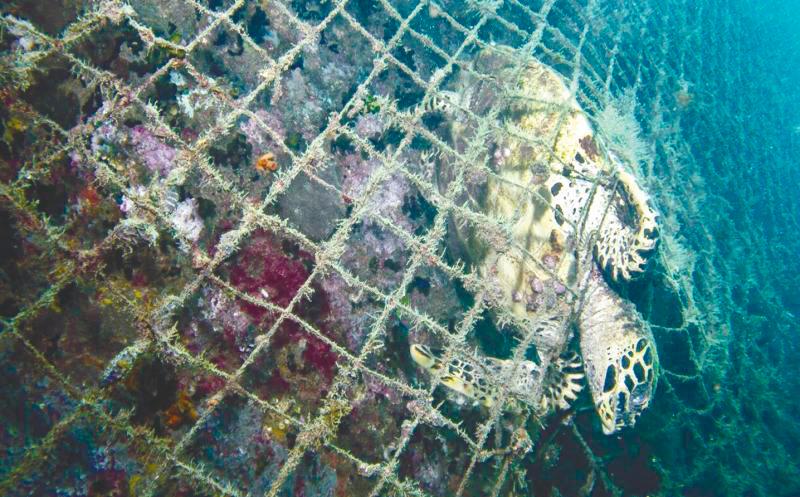MALAYSIA has a rich assortment and plethora of seafood-based culinary delights. Agriculture and Food Industries Minister Datuk Seri Ronald Kiandee said Malaysia’s per capita consumption of fish and seafood has been 46.9kg annually, and ranks second in Southeast Asia, behind Cambodia’s 63.2kg.
It goes without saying that Malaysians are heavily dependent on seafood – which means primarily commercial catches and landings, i.e. from our waters. However, it was reported a few months ago that fish sightings in Malaysia has decreased, especially in the north of the peninsula, by up to 70%, as highlighted by National Fishermen’s Association chairman Abdul Hamid Bahari.
According to an unnamed source from the Fisheries Department, the issue of the decrease in fish started in 2015 due to the enormous number of catches every year, with illegal fishing as one of the primary causes.
It is part of a broader global trend as noted by United Nations Food and Agriculture Organisation (FAO), which reported in 2018 that almost 90% of the world’s fish stocks have been fully exploited, overexploited or depleted (“90% of fish stocks are used up – fisheries subsidies must stop”, United Nations Conference on Trade and Development, July 13, 2018).
Despite recent claims that fish stocks are recovering, scientists warn against overly-optimistic global fisheries evaluations based on individual diagnostics that fail to represent the complexity and uncertainty of global fisheries datasets (“Recovery of assessed global fish stocks remains uncertain”, Proceedings of the National Academy of Sciences, July 26, 2021).
It is no surprise then that the South China Sea, home to “half” of Southeast Asia’s main fishing hotspot (the other being the Straits of Malacca and the Andaman Sea), is also facing the same predicament.
According to a report, “Sink or Swim: The future of fisheries in the East and South China Seas” (2021), by research scientists from the University of British Columbia’s Institute for the Oceans and Fisheries, by the end of the century, the South China Sea’s main commercial species would have critically declined by 90% in weight biomass due to overfishing and the consequences of severe climate change.
Overfishing due to illegal, unreported and unregulated (IUU) fishing, has occurred in this region. For example, the total catch per unit in the Gulf of Thailand has decreased by 86% since 1966 (“The threat of overfishing”, The Asean Post, Sept 17, 2018).
According to the FAO, the yearly effect of IUU fishing in Indonesia is between US$10 billion (RM$44.69 billion) and US$23 billion (“Calculation Model of Economic Losses Due to Illegal Fishing Activities in Indonesian Territorial Waters”, Conservation Strategy Fund, 2018).
In Malaysia, we lost RM6 billion to IUU fishing in 2016, and even though enforcement and monitoring were tightened, we still lost RM4.2 billion in 2019. Again, overfishing and poaching, which includes harmful fishing techniques such as fish bombing or blast fishing, the use of dragon traps and push nets, bottom trawling, etc as well as encroachments by foreign fishermen, have all contributed to the decrease in our fish stocks.
World Wildlife Fund Malaysia reported that bottom trawling, which sweeps up everything on the ocean floor, is one of the most destructive fishing methods and is responsible for the destruction of thriving marine ecosystems, including coral reefs. Some of the fish species that fishermen used to capture 30 to 40 years ago are no longer seen in the oceans.
Last year, the investigative journalism team R.age reported that the decline in fish stocks under our Economic Exclusive Zone facing the South China Sea has been noticeable since the influx of foreign fishermen, especially Vietnamese trawlers.
Crime statistics provided by the Department of Statistics indicated that Vietnamese fishermen are the most frequent violators. These Vietnamese trawlers have caused damage to coral reefs in our waters.
Our fishermen too are not spared from claims of illegal fishing in our neighbour’s waters.
In 2012, Malaysia and Indonesia ratified a Memorandum of Understanding (MoU) on common guidelines for the protection of fishermen. The MoU was renewed in 2020 to establish a joint fishery development area.
However, in 2021, R.age reported that harassment of our fishermen by Indonesian authorities continued. There have been occasions when Indonesia’s Maritime Affairs and Fisheries Ministry’s patrol ships cornered vessels with Malaysian flags in the Natuna Sea, only to find that the fishing crew are Laotians. Natuna Island is known to be blessed with an abundance of marine resources.
Since fisheries is a regional issue, there is a need for stronger and more concerted regional cooperation among Asean member states.
At a bilateral level, Malaysia and Indonesia this year agreed to host joint-patrols along the Straits of Malacca and North Natuna Sea, with the aim of reinforcing maritime security against illegal fishing.
The Indonesian Marine Affairs and Fisheries Minister Sakti Wahyu Trenggono said illegal vessels are usually the ones that harm sustainability of fish stocks due to their overfishing and destructive fishing practices.
Joint patrol should also be done together with other Asean member-states to combat IUU in the South China Sea.
As of February 2022, Thailand has imposed a temporary moratorium on commercial fishing in the Gulf of Thailand until mid-June this year to rebuild marine resources in the meantime. This policy measure is also considered as part of an Asean action plan to promote the recovery of fish stocks in the South China Sea and Straits of Malacca, etc.
Currently, Asean only has a Strategic Plan of Action on Asean Cooperation on Fisheries 2021-2025. Notwithstanding, we should still strive for a Common Fisheries Policy (CFP), similar to the European Union (EU), where we can set quotas on the total allowable catches (TAC) and the concomitant of landing obligations (i.e. the number or amount of fish netted or deducted against the TAC quotas), enforce the ban on destructive fishing practices more effectively and on a sustainable basis, enable and empower systematic joint-action on a regional basis, etc., with the exception of freedom of movement, i.e. of fishermen and fishing vessels.
After all, Asean has already sought the technical assistance of the EU for its fisheries policy framework under the Enhanced Regional EU-Asean Dialogue Instrument.
As proposed in an EMIR Research article entitled, “Regional and Bilateral Solidarity, Cooperation and Coordination in Food Security Policy” (April 22, 2021), we suggested that Asean’s version of a CFP be used to support massive aquafarming projects in border regions and redesignate the smooth cross-border movement of fishes within the zonal limits for the purpose of commercial breeding. This will not only promote joint/cross-border investment from the private sector but be a more viable alternative to deep-sea fishing, which can often result in an unfair playing field, among others.
Jason Loh Seong Wei and Anis Salwana Abdul Malik are part of the research team of EMIR Research, an independent think tank focused on strategic policy recommendations based on rigorous research. Comments: letters@thesundaily.com














